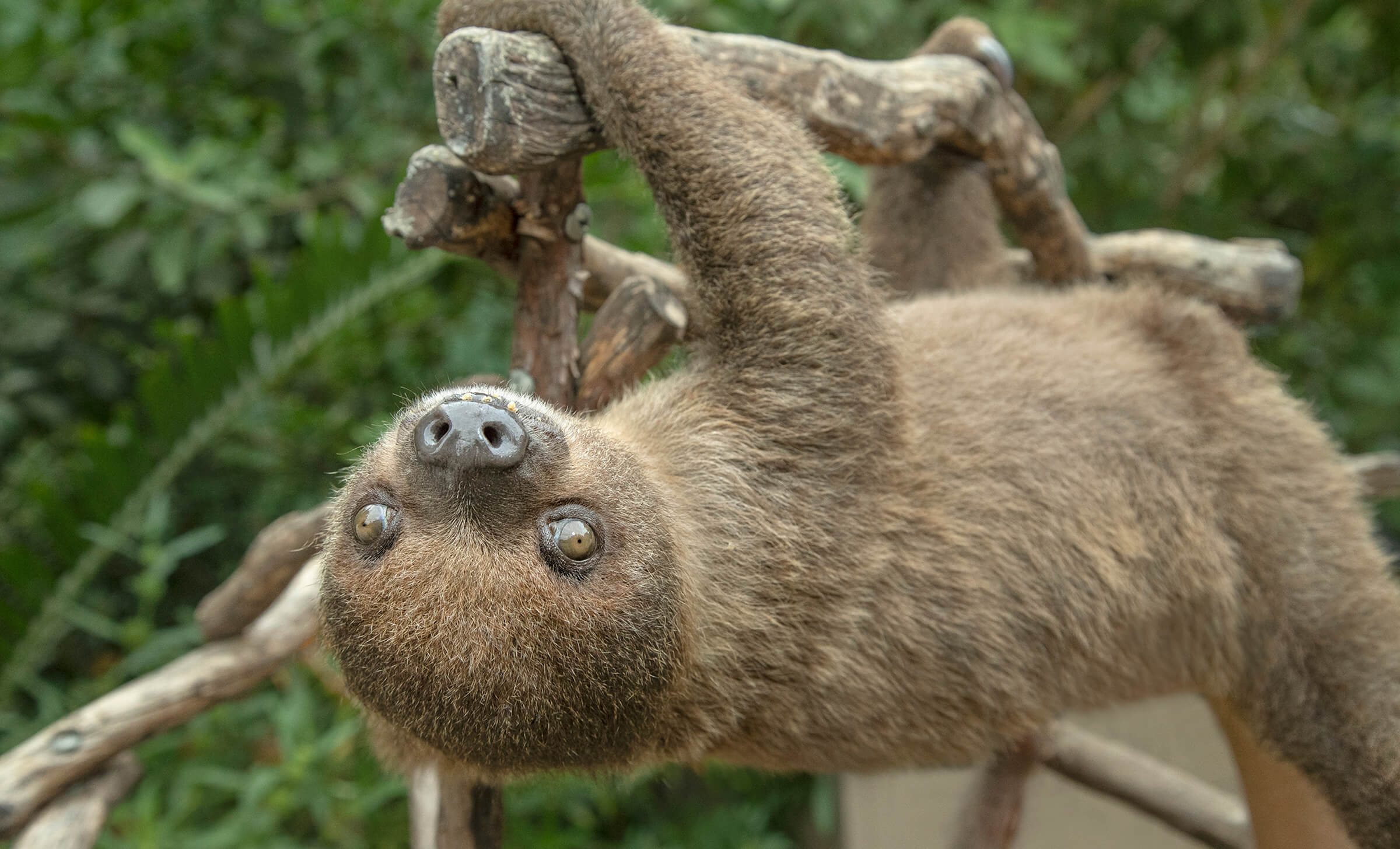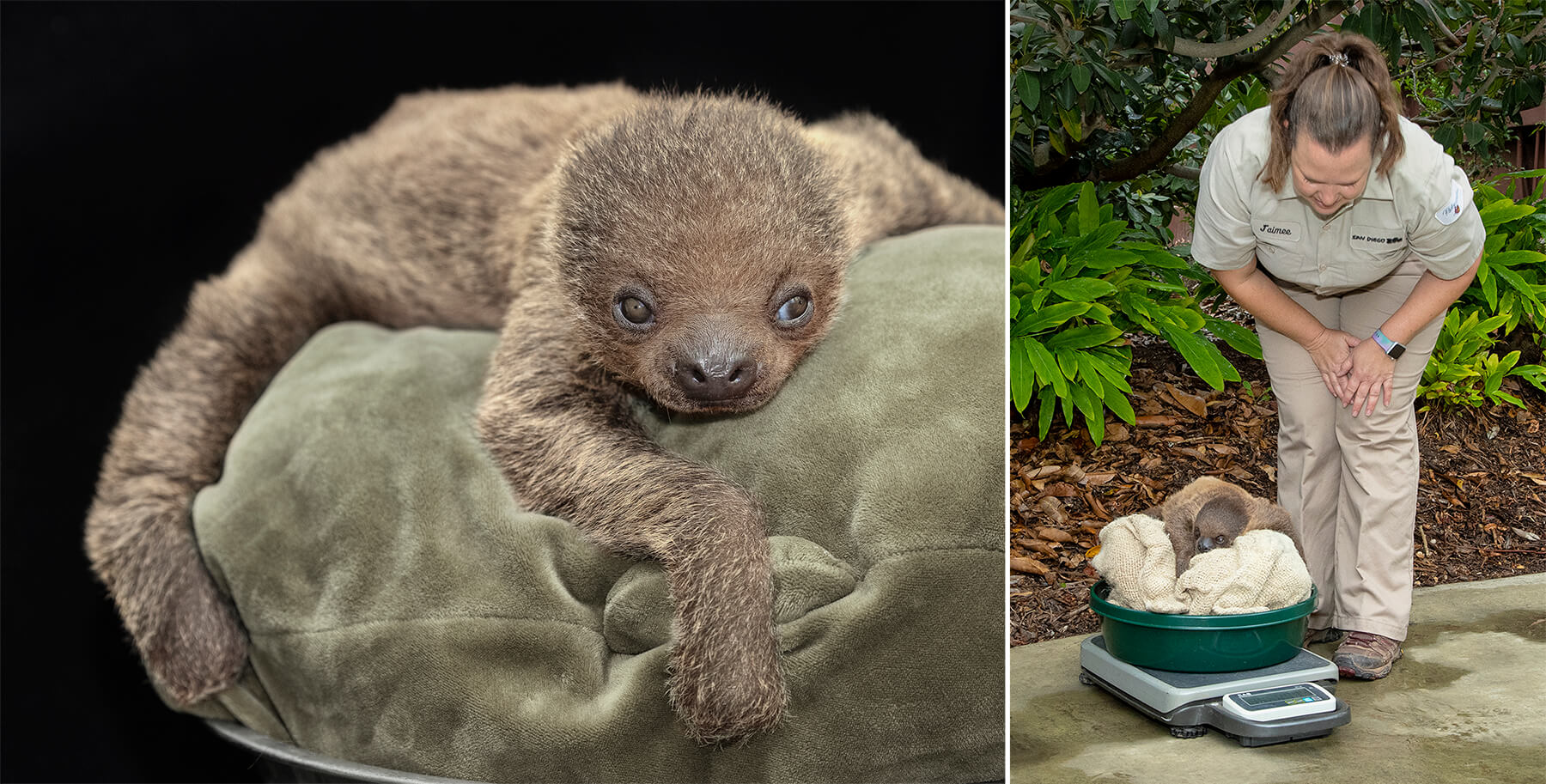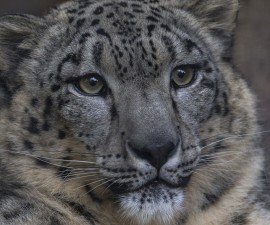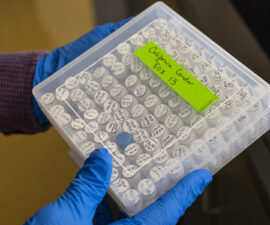BY Peggy Scott
Photography by Ken Bohn
For an animal whose pace tops out at three miles per hour, the Zoo’s newest Linné’s two-toed sloth Choloepus didactylus wasted no time in winning the hearts of keepers and visitors alike. Born on April 19, 2019, the little boy, named Tornero, soon proved to be big on personality. “He was outgoing and curious from the beginning,” says Jaimee Lafleur, a keeper at the Zoo. “His mother, Xena, is mellow and even-keeled, and so is the baby, and he was interested in his keepers from early on.” Jaimee went on to note that his amiable nature made their work easier, and allowed them to get a weight on the youngster at only 10 days of age—the earliest ever for this species at the Zoo. Those 21 ounces could grow to 20 pounds when Tornero reaches adulthood, at around 5 years of age. Tornero may have a way to go size-wise, but he’s already showing great progress in other areas of development. This isn’t really a surprise to his keepers, given that he is the offspring of what could be considered a sloth super couple.
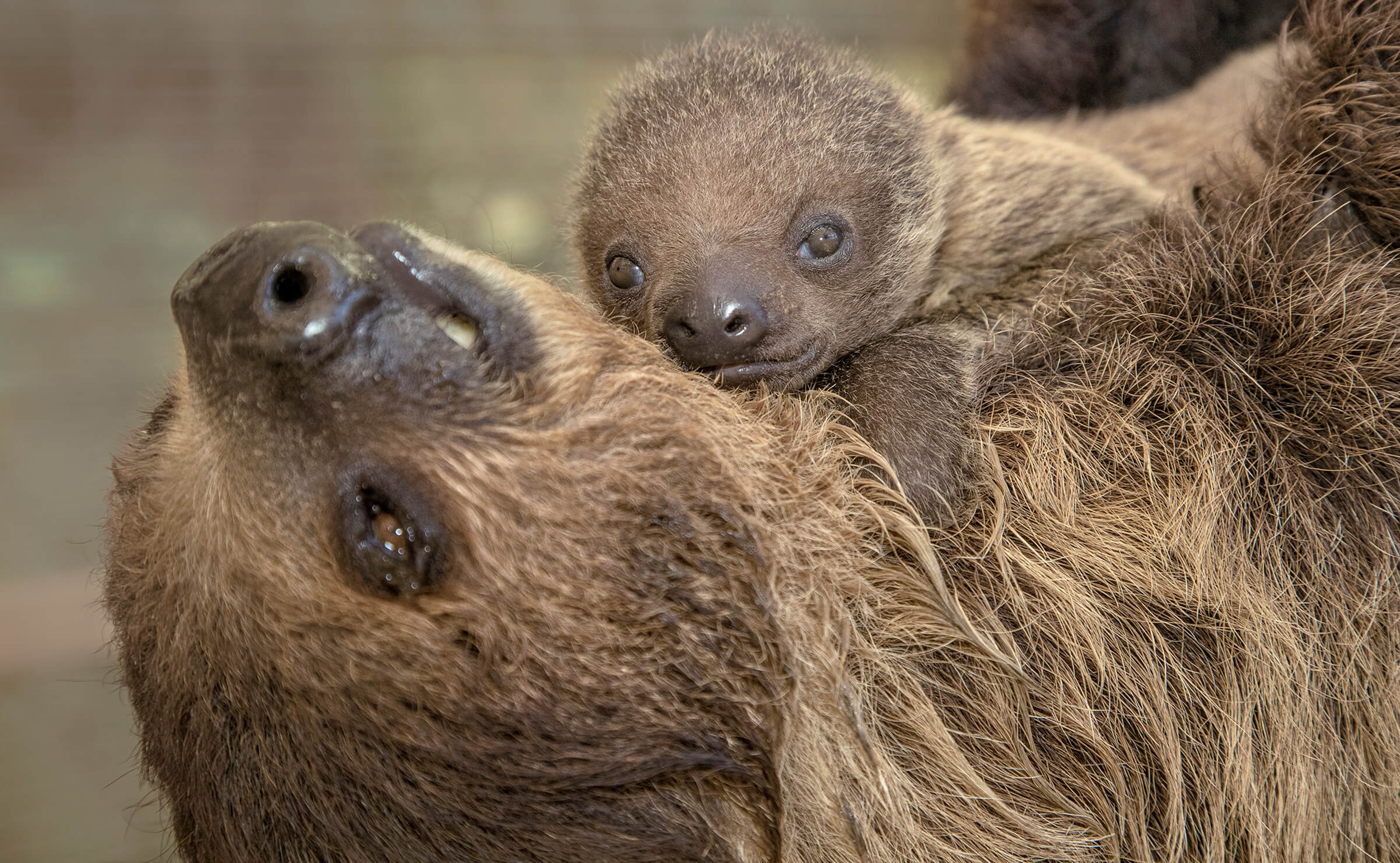
It Runs (Slowly) in the Family
When it comes to both looks and personality, this apple apparently didn’t fall far from the tree. Tornero’s mother, Xena, has been an animal ambassador and visitor favorite for several years. Her calm demeanor made her a natural for presentations and other public interactions. And Tornero’s good looks? He takes after his dad, who was so striking—with his long, luxurious, golden hair—that only the name Brad Pitt would do. “He really is a handsome sloth,” Jaimee admits. The rest of the family should get some props, too. Xena’s younger sister, Paloma, is part of the Animals in Action family; and Estrella, another sibling, is an animal ambassador at the Safari Park.
Along with being the latest in his family to join the ranks of animal ambassadors, Tornero represents a big success in the animal ambassador concept as a whole. Nicki Boyd, the associate curator of behavioral husbandry and department head of Animal Connections at the Zoo, calls Tornero’s progress a “full-circle success story” for animal ambassadorship and Species Survival Plans (SSPs). “Animal ambassadors were typically not included in SSP breeding; it was considered logistically difficult because they were used for education,” Nicki says. “We wanted to change that, because each SSP has a 100-year master plan for its species. Including animal ambassadors not only results in sustainable ambassador populations, it adds to the genetic diversity, as well.”
Xena’s background helped Nicki promote the idea of animal ambassadors reproducing. “Xena was the first mother-reared ambassador here at the Zoo,” Nicki says. “And once she was of breeding age, she was supposed to go somewhere else. I wanted to bring the male here, instead, and see if we could get similar results with a baby.” The SSP coordinator for this species agreed to the idea, and Brad Pitt came from Canada, becoming a San Diego sloth. He and Xena took to each other, and two years later, Xena gave birth to Tornero.
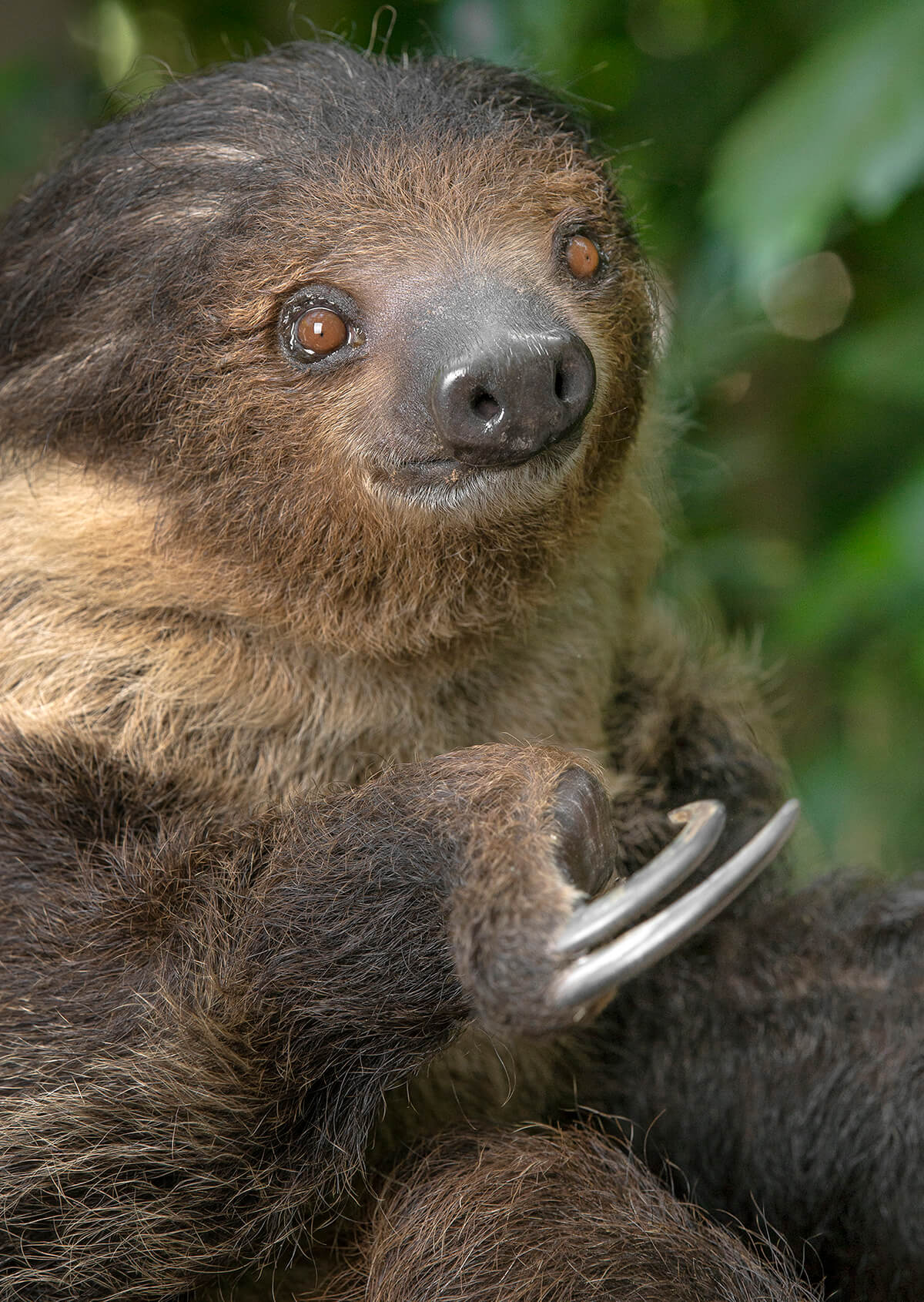
GET A GRIP
One look at Xena and her impressive claws, and it’s easy to see how sloths can hang out in trees with such ease.
Ambassador training starts early, while the animal is young. “They learn to come out with us and to be around new sights and smells,” Jaimee says, noting that Xena’s rather Zen outlook helps a lot. “She was comfortable from the early days with us handling the baby three times a week, and that reassured him, too. They’re both used to being with people.”
By about two weeks of age, Tornero was eating solid food, and only nursed for about one month. And in a somewhat unusual case with animals, mother and baby shared their quarters with the father. “Brad Pitt was really good to them and gave Xena her space,” Jaimee said.
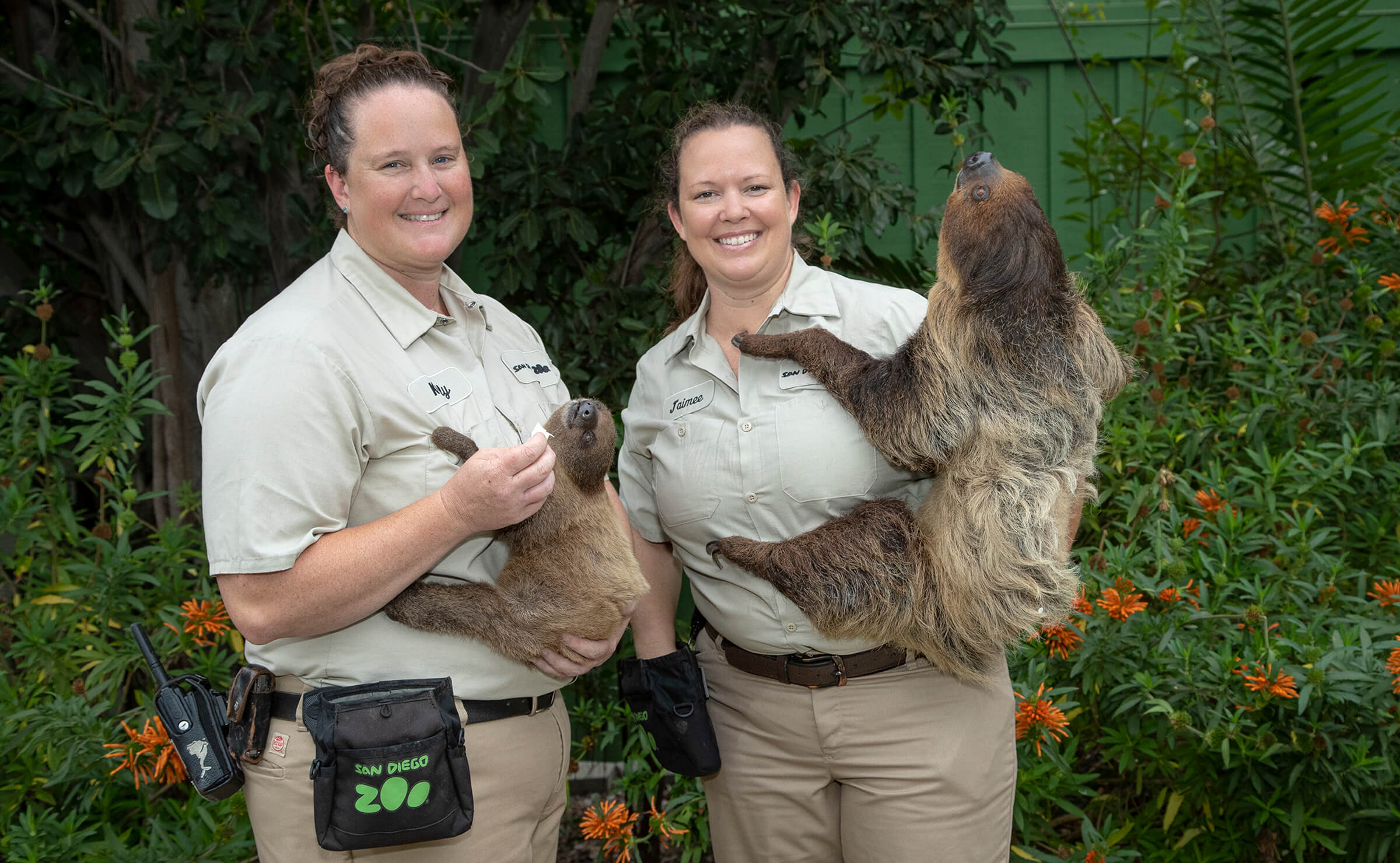
Bringing Up Upside Down Baby
Tornero still spends some of his time hanging onto Xena, but that behavior usually drops off at about a year of age. Jaimee refers to his current behavior as the “toddler stage,” where he is curious about everything and interested in the world around him. She adds that caring for a baby sloth is easier than a lot of other infants, as “they only go to the bathroom once a week, and mom and baby go at the same time.” Plus, like other sloths, they sleep up to 20 hours a day, eating only at night.
Tornero’s favorite food items include jicama and broccoli; and the latter is something Xena only began eating after her son liked it. One thing they do not agree on, however, is a certain yellow fruit. “He likes banana, and Xena hates it,” Jaimee says. “If banana accidentally touches her food, she won’t eat any of it.”
Food selection aside, mother sloths have a unique way of feeding their babies, Jaimee notes. “When eating, mom drops food on herself for the baby to pick up and eat. The food has her saliva on it, and this provides the baby with good gut microbes.”
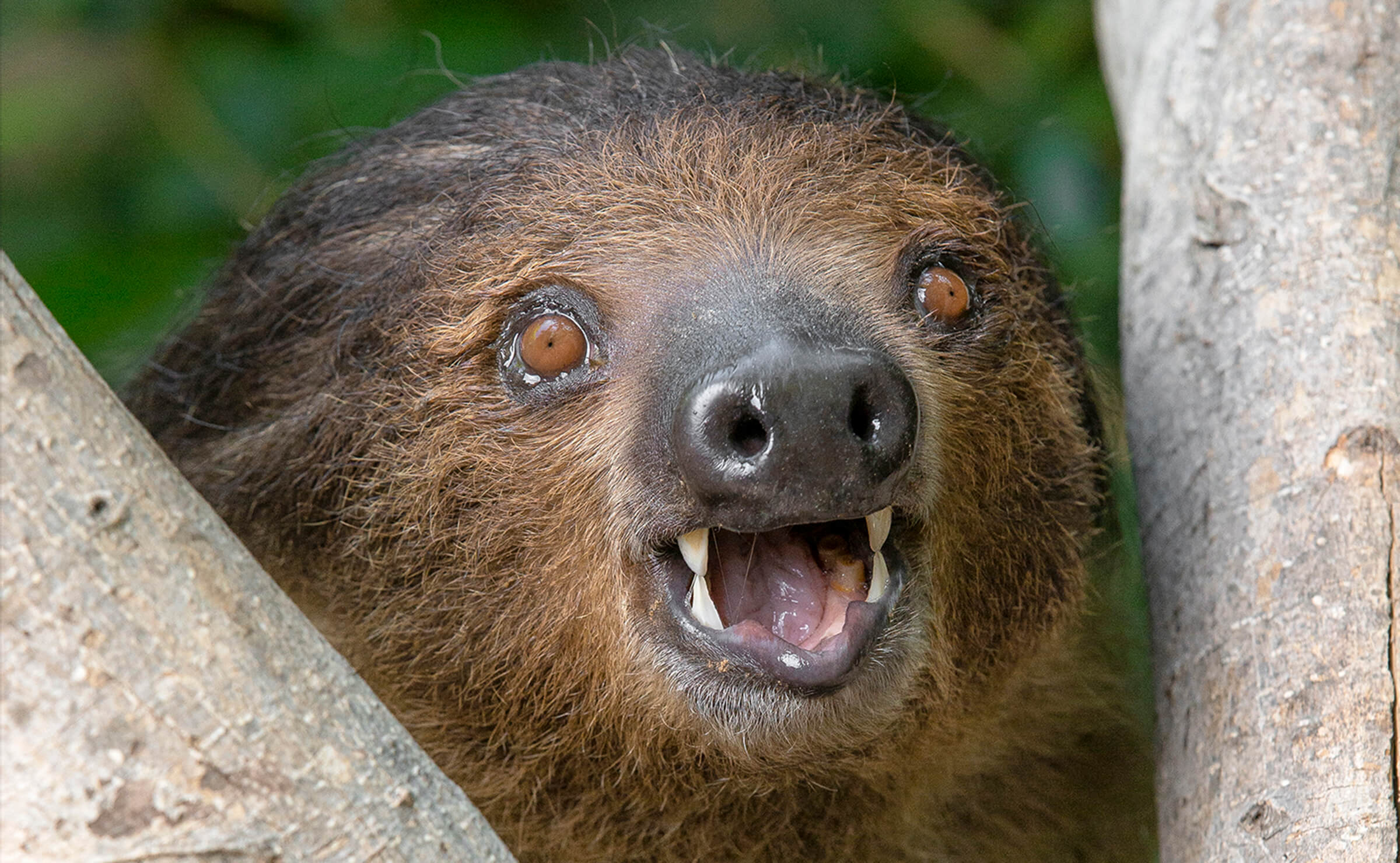
Home, Endangered Home
In the wild, Linné’s two-toed sloths live in tropical and cloud forests of Central and South America. While the population is holding steady, the sloths are still threatened by habitat loss, since they depend on trees. Sloths make their way along the branches of trees methodically, hanging by their three- to four-inch-long, curved claws. Those claws serve another purpose as well. “Sloths are super strong, and they use their claws for protection,” Jaimee says. She notes that the animals rely on their good hearing and sense of smell; their eyesight is poor, and they don’t see color.
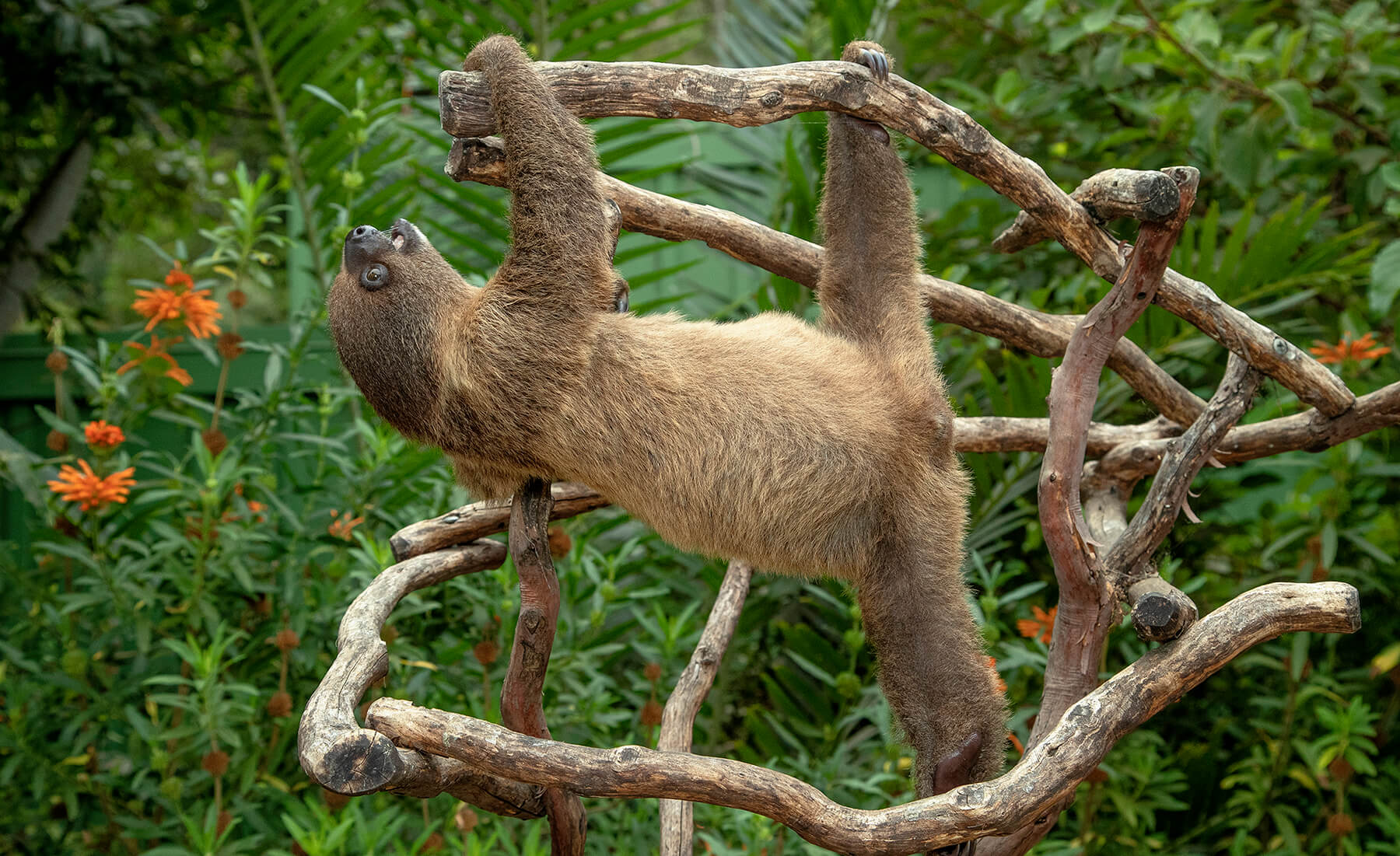
THE TERRIFIC TWOS?
Keepers report that Tornero is in his toddler years, and he is interested in everything that goes on around him.
Their slow-motion lifestyle, which has been parodied in animated films, has a lot to do with the relatively low nutritional value of what sloths eat—mostly leaves, stems, buds, and some fruit. They digest their food slowly through a large, four-chambered stomach, similar to a cow’s. Along with vegetables and fruit, sloths at the Zoo and Park are offered a canned primate diet, with seeds and high-value fruits used for training.
Ready to look at these unhurried animals in person—and in slow motion? At the Zoo, guests can visit our sloth exhibit in Elephant Odyssey, and our two-toed sloth animal ambassadors make occasional special appearances. Xena and Tornero can be seen during unscheduled presentations or sometimes during privately booked custom tours that are offered several times a week. But you know how kids are—because mom and baby are still bonding, these appearances are not guaranteed. More are planned for the future, though.
Speaking of the future, Tornero’s success is a positive sign for animal ambassadors in general. “It was such progressive work to have a mother-reared ambassador, get a breeding recommendation, have that animal still be an ambassador, get pregnant, have a baby, still do programs with a baby, and have the baby easily transition to ambassador training,” Nicki says. “We’ve shown what breeding cooperation can do.”

